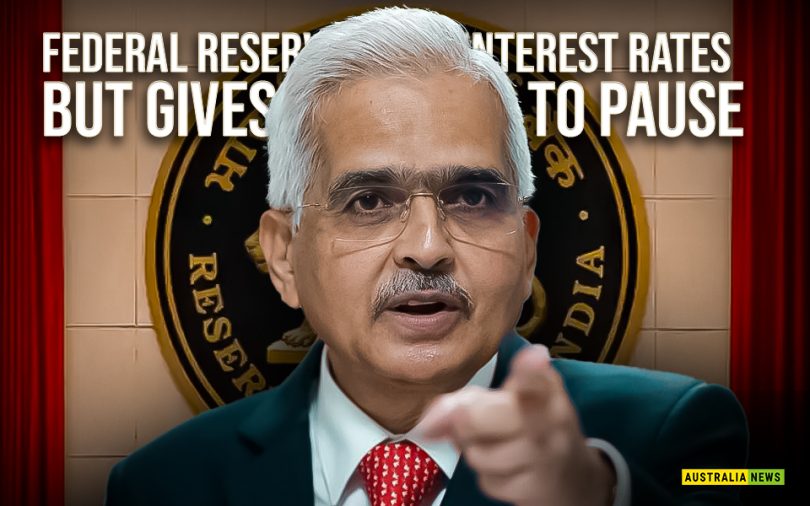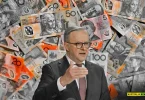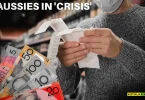Never squander a crisis. It’s a vital political premise and a strategy that the world’s main central banks appear to be adopting.
Their single-minded emphasis on combating inflation suddenly has a competitor: financial stability.
While many economists outside the banking industry continue to urge central banks to keep raising interest rates aggressively to combat inflation, the reality of bank runs and failures in the United States has prompted a rethink.
US Federal Reserve Chair Jerome Powell publicly conceded as much during his news conference following Thursday’s quarter-point rate rise, which was generally projected to be a half-point just a few weeks ago.
“We did consider that (a pause) in the days running up to the meeting,” Powell said in a news conference following today’s rate hike decision, referring to a time when the banking crisis threatened to spin out of control.
“Before the recent events, we were clearly on track to continue with ongoing rate hikes.
“In fact, as of a couple of weeks ago, it looked like we’d have to raise rates over the course of the year more than we’d expected at the time of the December meeting.”
The Fed’s policy of least regret?
Instead, the Fed reversed its position from its last meeting, which ended on February 1.
“Ongoing increases in the target range will be appropriate,” it declared at the last meeting.
“Some additional policy firming may be appropriate,”
Powell, on the other hand, was eager to retain the link between the US banking crisis and inflation while explaining why the Fed had backed off from a lower rate hike and could perhaps be done increasing.
“Since our previous FOMC (Federal Open Market Committee) meeting, economic indicators have generally come in stronger than expected, demonstrating greater momentum in economic activity and inflation,” Powell said in prepared remarks.
Normally, this would be a signal for more aggressive rate hikes, but not in the midst of a banking confidence crisis.
What comes next for the world’s broken financial system?
According to business writer Ian Verrender, the failure of Silicon Valley Bank and Signature Bank in the United States is a timely reminder that quick changes in monetary circumstances can have unexpected and unforeseen repercussions.
“We believe, however, that events in the banking system over the past two weeks are likely to result in tighter credit conditions for households and businesses, which would in turn affect economic outcomes,” the Fed chair stated.
“It is too soon to determine the extent of these effects and therefore too soon to tell how monetary policy should respond.”
What is the policy of least regret?
A minor rate rise to demonstrate the Fed’s commitment to inflation but small enough not to cause new pain for US banks?
As a relatively little fish in a large global pond, the RBA is at least partially vulnerable to the waves created by its larger central banking peers, particularly the Fed.
With a cash rate of 3.6 percent, the RBA is already well behind the Fed funds rate of 4.75 to 5 percent.
This puts downward pressure on the Australian currency, which in turn raises import prices and hence consumer price inflation.
A halt in rate rises in the United States may be immensely helpful to the RBA, which has previously revealed that it is actively contemplating doing the same in Australia.
In consequence, a delay in rate hikes here would benefit hundreds of thousands of borrowers who are transitioning from low-interest fixed mortgages to variable rates that are often higher than what they were assessed as being able to pay.
With house loans accounting for almost two-thirds of Australian banking, any mortgage crisis poses an existential threat to our banks.
It would not be the first time that a US financial crisis has spared Australia from its own mortgage and prospective banking disaster.
The mining boom before the global financial crisis was the last time Australia’s unemployment rate was anywhere close to what it is currently.
By the third quarter of 2008, inflation had reached 5%, while the RBA’s cash rate objective had reached 7.25 percent. March of 2008.
It would have likely grown much farther if it hadn’t been for the early phases of the global financial crisis.
After US investment banking behemoth Bear Stearns was bailed out in a buyout by JP Morgan Chase, share markets collapsed and the global financial system steadily crumbled as a result of massive losses from US subprime mortgages.
However, the failure of Lehman Brothers protected Australians who were drowning in debt and facing mortgage rates reaching 10%.
During the global financial crisis that followed, the RBA cut interest rates by 4.25 percentage points between September 2008 and April 2009.
Throw in some government stimulus payments and first-home buyer incentives, as well as massive demand for commodities from China’s own stimulus program, and the Australian economy was salvaged, notably without recession, by mid-2009.
With the biggest cohort of inexpensive, pandemic-era fixed-rate mortgages set to mature between next month and the end of the year, a US financial crisis and the rate relief it may bring can’t come soon enough for many Australian mortgage borrowers.
- Published By Team Australia News








